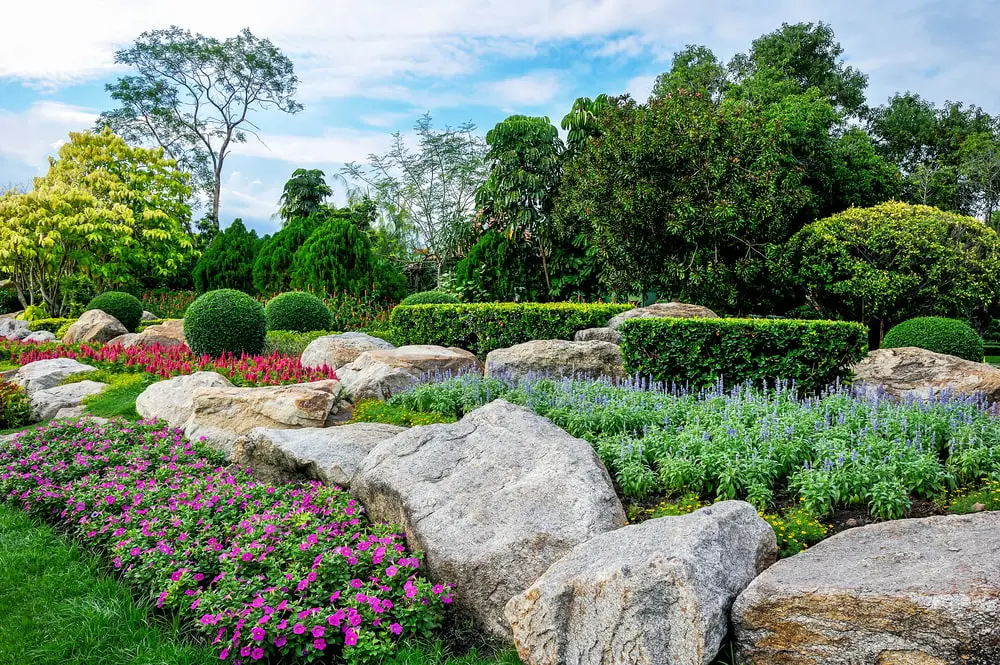The Basic Principles Of Hilton Head Landscapes
The Basic Principles Of Hilton Head Landscapes
Blog Article
What Does Hilton Head Landscapes Do?
Table of ContentsNot known Facts About Hilton Head LandscapesHilton Head Landscapes Can Be Fun For AnyoneThe smart Trick of Hilton Head Landscapes That Nobody is DiscussingIndicators on Hilton Head Landscapes You Should KnowThe smart Trick of Hilton Head Landscapes That Nobody is Talking AboutHilton Head Landscapes Fundamentals ExplainedLittle Known Facts About Hilton Head Landscapes.
Line develops all kinds and patterns and can be used in a variety of methods the landscape. Line in the landscape is produced by the side in between two products, the rundown or shape of a form, or a lengthy linear attribute. Lines are a powerful device for the developer due to the fact that they can be utilized to produce an unlimited variety of forms and types, and they regulate activity of the eye and the body.

Lines can have one or even more characteristics, such as those defined below, however they usually offer various functions. Number 1. Lines in the landscape - bluffton landscaping. The properties of lines figure out exactly how people reply to the landscape, both psychologically and literally. Straight lines are architectural and powerful; they develop a formal personality, are generally connected with a balanced design, and lead the eye directly to a focal factor.
The Ultimate Guide To Hilton Head Landscapes
Rounded lines produce a casual, all-natural, relaxed character that is connected a lot more with nature and unbalanced balance. Curved lines relocate the eye at a slower pace and include secret to the room by developing hidden sights.
Upright lines in the landscape include high, slim plant product, such as trees, or tall structures, such as an arbor or a bird house on a pole. Straight lines move the eye along the ground plane and can make a room really feel larger. Low lines are more controlled and develop a sensation of remainder or repose.
Hilton Head Landscapes Fundamentals Explained
Lines are likewise developed by the upright forms of developed functions and plant product. There are three main line kinds that produce kind in the landscape: bedlines, hardscape lines, and plant lines.
Bedlines connect plant material to your house and hardscape since the eye complies with the line, relocating the gaze via the landscape. Hardscape lines are created by the side of the hardscape, which defines the constructed structure. Line can likewise be developed by long and narrow products, such as a fencing or wall.
Our Hilton Head Landscapes Ideas
Type is discovered in both hardscape and plants, and it is generally the dominant visual aspect that spatially organizes the landscape and often identifies the style of the garden. The type of structures, plant beds, and yard accessories additionally determines the overall form motif of the garden. Formal, geometric forms include circles, squares, and polygons.
Plants develop type in the garden through their describes or silhouettes, yet kind can additionally be specified by a gap or unfavorable area in between plants - hilton head landscapers (https://triberr.com/h1tnhdlndscps). Circles can be complete circles, or they can be split right into half circles or circle segments and incorporated with lines to develop arcs and tangents
Not known Facts About Hilton Head Landscapes
Circles are a solid layout form due to the fact that the eye is constantly attracted to the facility, which can be utilized to highlight a focal factor or connect other types. Round kinds in hardscape and grass panels.
The square type can additionally be segmented and used repetitively to create a grid pattern. Unlike circles, squares are more powerful on the sides, which can be lined up or overlapped to develop distinct patterns and even more complex kinds. Polygons are many-sided kinds with straight edges. Triangles, as an example, are three-sided polygons.
Meandering lines often simulate the all-natural training course of rivers or streams and can be referred to as smooth lines with deeply rounded wavinesses. Meandering image source lines (Number 3) function well for paths, plant bedlines, and completely dry stream beds. Twisting lines can add interest and mystery to a garden by leading customers around edges to uncover brand-new sights and areas.
Hilton Head Landscapes for Dummies

Figure 5. Fragmented edges: stepping stones in path. Form is the most long-lasting high quality of a plant (landscaping hilton head sc). https://www.reverbnation.com/artist/hiltonheadlandscapes. Common plant forms are well developed and standardized, as type is the most regular and well-known attribute of plants. Type can likewise be produced with the massing of plants, where the total mass creates a various kind than a private plant.
A very different type has to be made use of with careone or 2 job well as a focal point, yet way too many wreak havoc. All-natural plant forms, instead of over-trimmed types, ought to develop the bulk of the structure. The relevance of total form is basically based on the checking out perspectivethe form of a tree can appear fairly different to an individual standing under the cover versus checking out the tree from a distance in an open field.
Facts About Hilton Head Landscapes Revealed
Plant types additionally create and specify deep space or open spaces between the plants, developing either convex or concave forms in deep spaces. High-arching tree branches commonly create a concave open room under the branches, and a round canopy with low branches fills the room to produce a convex type in the open space under the tree.

Report this page